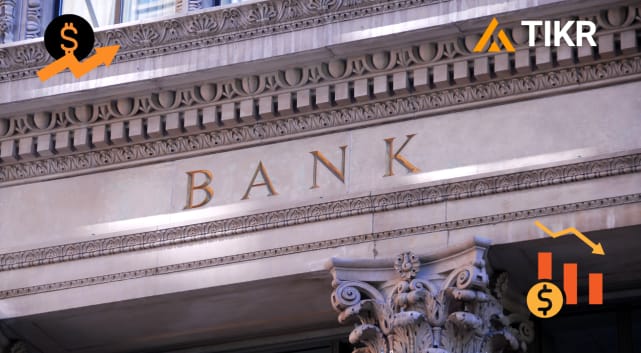Hydro One Limited (H) may not dominate headlines, but few Canadian companies have matched its quiet consistency over the past decade. The Toronto-listed utility has steadily compounded earnings, expanded its regulated rate base, and returned cash to shareholders without relying on bold promises or risky expansion. In a market defined by uncertainty and short-term narratives, Hydro One stands as a model of patient, predictable performance.
Find out what a stock’s really worth in under 60 seconds with TIKR’s new Valuation Model (It’s free)
As Ontario’s largest electricity transmission and distribution company, Hydro One is more than just a utility; it’s a backbone for Canada’s most populous province. The company’s vast network spans more than 30,000 kilometers of high-voltage transmission lines and 126,000 kilometers of low-voltage distribution infrastructure, serving 1.5 million residential and business customers across roughly three-quarters of Ontario’s land area. Its infrastructure underpins the province’s economic engine, powering industries from automotive and manufacturing to mining and technology.

That scale and reliability have translated into steady returns for shareholders. Hydro One’s stock is up nearly 17% year-to-date, outperforming most North American utilities despite persistent rate uncertainty and inflationary pressures. Investors have gravitated toward its stable earnings profile, disciplined management, and strong regulatory environment, three ingredients that make it one of the most dependable income-generating equities in the country.
Quickly value any stock with TIKR’s powerful new Valuation Model (It’s free!) >>>
Financial Story
Hydro One’s second-quarter 2025 results reinforced its reputation as one of Canada’s most predictable compounders. The company reported C$2.07 billion in revenue, up 1.7% year over year, while net income rose 12% to C$327 million. Earnings per share climbed to C$0.54, up from C$0.49 a year earlier, as operational efficiency and regulated rate base growth continued to support both top- and bottom-line expansion.
For the first half of 2025, Hydro One generated C$685 million in net income, up from C$585 million in the same period in 2024, a 17% gain driven by rate adjustments, lower purchased power costs, and steady execution of infrastructure upgrades. Revenue net of purchased power reached C$1.17 billion in the quarter, reflecting consistent margin expansion and cost control, while operations, maintenance, and administration expenses remained effectively flat year-over-year at C$320 million.
| Metric (C$ millions) | Q2 2025 | Q2 2024 | YTD 2025 | YTD 2024 | Change YoY |
|---|---|---|---|---|---|
| Revenue | 2,066 | 2,031 | 4,474 | 4,197 | +6.6% |
| Purchased Power | 899 | 940 | 2,119 | 2,036 | –4.1% |
| Revenue (Net of Purchased Power) | 1,167 | 1,091 | 2,355 | 2,161 | +9.0% |
| Operating, Maintenance & Admin | 320 | 319 | 652 | 641 | +1.7% |
| Net Income | 327 | 292 | 685 | 585 | +17.1% |
| EPS | 0.54 | 0.49 | 1.14 | 0.98 | +16.3% |
| Dividend (Annualized) | 1.33 | 1.28 | — | — | +3.9% |
| Market Cap (June 2025) | C$29.4B | — | — | — | — |
| Rate Base | C$28.5B (2025E) | — | C$32.1B (2027E) | — | ~+6% CAGR |
The company’s regulated rate base now totals approximately C$28.5 billion, a figure that is projected to grow to C$32.1 billion by 2027 under current capital plans. New transmission projects, ongoing distribution modernization, and investments in system reliability are driving that expansion. Over the next two years, Hydro One expects annual capital expenditures between C$3.2 billion and C$3.5 billion, reinforcing its long-term growth trajectory and visibility.
At the same time, the utility continues to reward shareholders with consistent dividend growth. Its C$1.33 annualized dividend represents a 3.0% yield and is supported by a conservative payout ratio and stable regulated cash flows. The balance sheet remains strong, with a debt-to-capital ratio below the industry average and credit ratings that give it one of the lowest financing costs among Canadian utilities.
Look up Hydro One’s full financial results & estimates (It’s free) >>>
Broader Market Context
Hydro One sits at the center of Canada’s electrification and infrastructure transformation. Ontario’s population is growing faster than any other province, and the shift to EVs, data centers, and clean manufacturing will require billions in grid investments over the next decade.
Unlike U.S. utilities grappling with deregulated markets and policy risk, Hydro One operates within a stable, single-province regulatory framework that provides multi-year visibility on earnings and capital recovery. This clarity gives it an advantage as global capital seeks dependable infrastructure yields amid higher-for-longer interest rates.
For income investors, Hydro One’s steady rate base expansion offers inflation protection through regulated returns, while its consistent dividend growth makes it one of Canada’s premier “bond proxy” equities. It’s not immune to macro headwinds, but its role in enabling Ontario’s low-carbon transition provides a durable growth runway tied to necessity rather than speculation.
1. Regulated Expansion Drives Long-Term Stability
Hydro One’s entire business model is anchored in regulation, and that’s exactly what makes it so attractive to long-term investors. Unlike merchant power producers that face market pricing swings, Hydro One earns a predictable return through its Ontario Energy Board–approved rate structure, which currently allows a 9.36% return on equity for both its transmission and distribution operations.
This regulatory clarity gives Hydro One unmatched earnings visibility. Its multi-year joint rate application provides an approved framework for ongoing capital investments through 2027, ensuring stable returns even as macroeconomic conditions fluctuate. That means the company can plan grid modernization, rural electrification, and reliability upgrades without jeopardizing financial performance.
As Ontario accelerates electrification and clean energy integration, Hydro One’s role will only become more essential. Population growth, electric vehicle adoption, and industrial decarbonization are all expected to drive rising power demand across the province. Hydro One’s transmission network is positioned to serve as the infrastructure foundation for that transition, creating an avenue for sustained earnings growth at regulated returns.
2. Transmission and Distribution: Balanced and Built for Efficiency
Hydro One’s entire business model is anchored in regulation, and that’s precisely what makes it so attractive to long-term investors. Unlike merchant power producers that face market pricing swings, Hydro One earns a predictable return through its Ontario Energy Board–approved rate structure, which currently allows a 9.36% return on equity for both its transmission and distribution operations.
This regulatory clarity gives Hydro One unmatched earnings visibility. Its multi-year joint rate application provides an approved framework for ongoing capital investments through 2027, ensuring stable returns even as macroeconomic conditions fluctuate. That means the company can plan grid modernization, rural electrification, and reliability upgrades without jeopardizing financial performance.
As Ontario accelerates electrification and clean energy integration, Hydro One’s role will only become more essential. Population growth, electric vehicle adoption, and industrial decarbonization are all expected to drive rising power demand across the province. Hydro One’s transmission network is positioned to serve as the infrastructure foundation for that transition, creating an avenue for sustained earnings growth at regulated returns.
Value stocks like Hydro One in less than 60 seconds with TIKR (It’s free) >>>
3. Dividend Dependability and Defense Total Returns
Hydro One’s dividend policy remains one of its biggest attractions. Since going public in 2015, the company has raised its dividend nearly every year, reflecting its disciplined capital allocation and steady cash flow growth. Its 3.0% yield might not turn heads, but the payout’s consistency and growth rate, tied directly to rate base expansion, make it a powerful compounding engine over time.
The company’s payout ratio remains comfortably below 80%, leaving room for continued increases without straining balance sheet flexibility. Combined with its projected 5–7% annual EPS growth, Hydro One’s total return potential sits firmly in the 8–10% range, with little volatility. That’s exactly the kind of profile many investors seek when balancing growth portfolios with income stability.
In a sector where many utilities face uncertain regulatory frameworks, Hydro One’s position in a single, economically diverse province gives it a unique edge. Ontario’s commitment to electrification, population growth, and industrial investment creates a durable runway for Hydro One to expand its footprint while maintaining the reliability investors expect from a regulated utility.
The TIKR Takeaway

The Hydro One valuation already reflects its stability premium. Still, its combination of regulated earnings visibility, rate base expansion, and dividend dependability makes it a cornerstone for investors seeking low-risk compounding. The company’s clear path to mid-single-digit EPS growth and reliable payout growth continues to offer attractive risk-adjusted returns, particularly in volatile market conditions.
For those looking to balance growth exposure with predictability, Hydro One remains one of Canada’s most quietly effective long-term holdings, proof that boring can still be brilliant.
Should You Buy, Sell, or Hold Hydro One’s Stock in 2025?
Hydro One delivers stable earnings, predictable cash flow, and consistent dividend growth supported by regulated transmission and distribution assets. The company benefits from steady capital investment, strong credit metrics, and a clear rate framework that supports long-term visibility.
The tradeoff is limited upside due to modest growth, slower earnings expansion, and a valuation that already reflects its stability. The shares fit income-focused investors who want low volatility and reliable returns, but they offer less appeal for those seeking faster growth or larger capital appreciation.
How Much Upside Does Hydro One Stock Have From Here?
With TIKR’s new Valuation Model tool, you can estimate a stock’s potential share price in under a minute.
All it takes is three simple inputs:
- Revenue Growth
- Operating Margins
- Exit P/E Multiple
If you’re not sure what to enter, TIKR automatically fills in each input using analysts’ consensus estimates, giving you a quick, reliable starting point.
From there, TIKR calculates the potential share price and total returns under Bull, Base, and Bear scenarios so you can quickly see whether a stock looks undervalued or overvalued.
Estimate a company’s fair value instantly (Free with TIKR) >>>
Looking for New Opportunities?
- See what stocks billionaire investors are buying so you can follow the smart money.
- Analyze stocks in as little as 5 minutes with TIKR’s all-in-one, easy-to-use platform.
- The more rocks you overturn… the more opportunities you’ll uncover. Search 100K+ global stocks, global top investor holdings, and more with TIKR.
Disclaimer:
Please note that the articles on TIKR are not intended to serve as investment or financial advice from TIKR or our content team, nor are they recommendations to buy or sell any stocks. We create our content based on TIKR Terminal’s investment data and analysts’ estimates. Our analysis might not include recent company news or important updates. TIKR has no position in any stocks mentioned. Thank you for reading, and happy investing!









